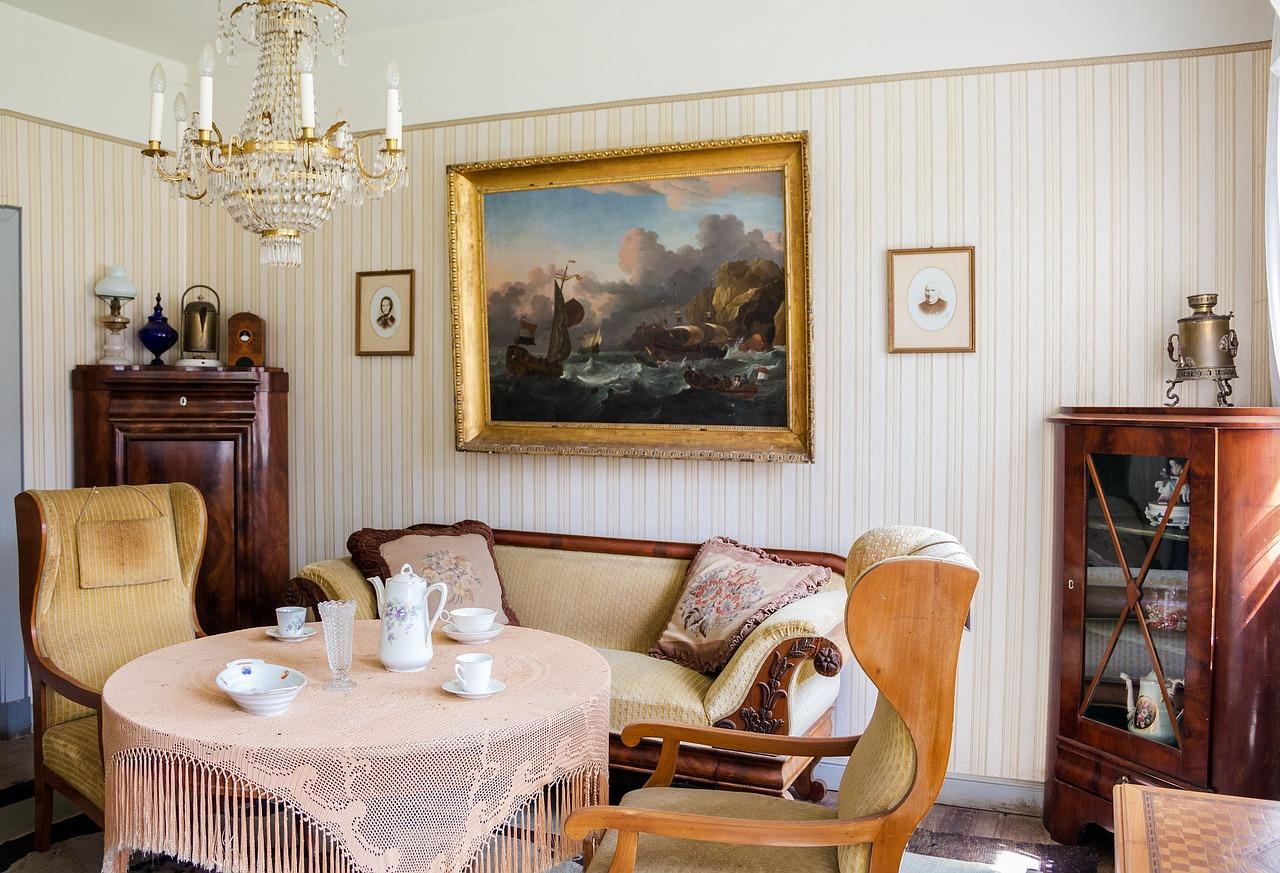Baroque Opulence in the Modern Home January 4, 2022 – Posted in: Home Improvement, Lifestyle – Tags: baroque, Opulence
Baroque design is unmistakable. It’s a deeply decorative design period, filled with ornate details and structural whimsy. As a period intrinsically connected to certain royal households, particularly that of King Louis XIV and Louis XV in France, it’s a truly opulent style and moment in history.
The Blog on the History of the Baroque Period, delves deep into the way Baroque expressed itself in various art forms, as a style of architecture or in visual arts, for instance.
In today’s blog, we want to take a closer look at the facets and tenants of Baroque interior design. Join as and begin to develop an understanding of how pieces of great opulence can fit into a modern space!
The History of Baroque Design
Origins and Influences
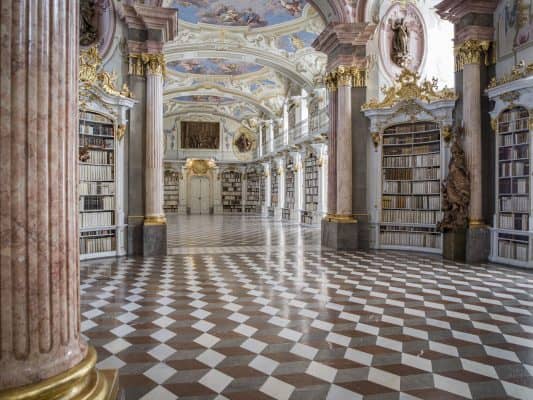
The Baroque period drew inspiration from the Renaissance style of the 16th century – indeed, many of the features of Renaissance art flow directly into Italian Baroque. From the painted ceilings of St. Peter’s Basilica to the delicate sculptures of Gian Lorenzo Bernini, a newfound appreciation for detail and décor was an important antecedent to the Baroque Period and Baroque design.
This art was often religious. The Protestant Reformation played a key role in challenging the ubiquitously religious connection to art by undermining the infallible Catholic Church. That, too, lay the groundwork for the developing decorative splendors of secular buildings, like the Palace of Versailles.
The 18th century saw Baroque art develop and blossom into its full potential. Combining an intellectual and cultural refinement with an abundance of wealth and power, the great royal houses of the 18th century invested deeply in outwards displays of wealth.
King Louis XIV, dubbed the Sun King, lay the groundwork for his successor’s investment in Baroque design furniture and Rococo. His investments into the Palace of Versailles had everything to do with projecting wealth and power to the rest of Europe and to his people.
Legacies of Baroque Design
The 19th century initially saw a sharp rejection of the lavish decorative splendors of Baroque design. A rising middle-class and new industrial priorities transformed the world aesthetically and culturally.
But it would be a lie to say that Baroque elements are not found in more recent design periods. The 19thcentury revival of the French Monarchy coincides with the Louis Phillipe style of furniture, which saw some splendors return to the decorative design.
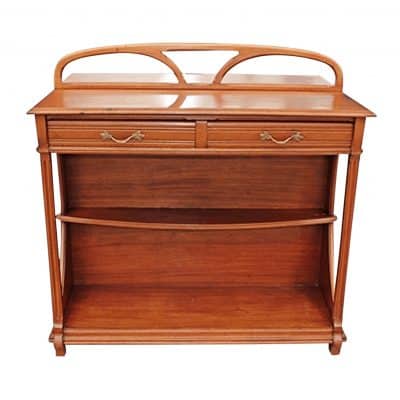
But even the early 20th century Art Nouveau movement, while entirely decoupled from royalty and royal houses, finds some of the same love for decorative whimsy in its natural swirls and light woods.
That is the key to understanding how Baroque design can fit into a modern space. Indeed, seeing the connections through space and time between different design practices allows for an inherently personal understanding of the way furniture can transform a space.
We want to take a closer look at some of the ways in which Baroque Design can become part of a modern home.
18th Century Treasures
What makes Baroque design so recognizable and engaging to look at is its careful attention to detail. In all of these pieces, you will notice certain decorative elements utterly unique and lovely to behold.
German Baroque
Furniture in German Baroque Design combines the decorative spirit of Baroque with more understated qualities than some of the pieces from neighboring France.
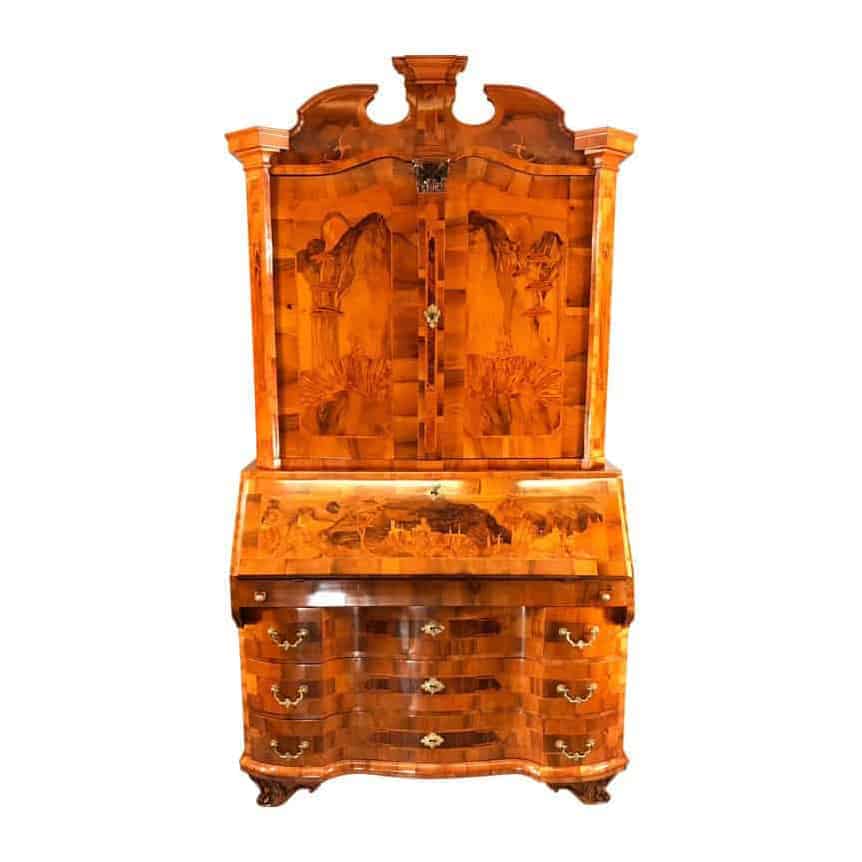
Take this German Baroque Cabinet from 1750, for instance. Rather than finding the majority of its decorative qualities in gold accents, this cabinet puts the wood front and center.
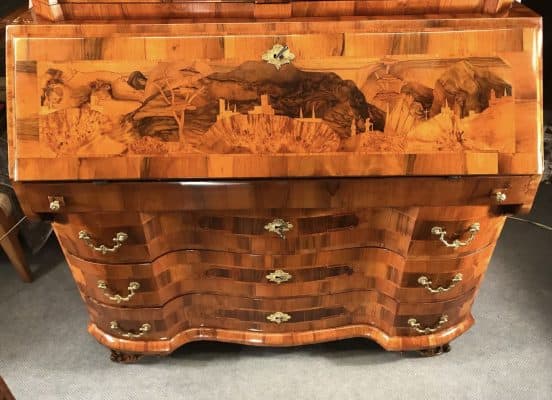
What makes it Baroque? The voluptuous wood curves with grace and symmetry, for instance. That, in combination with the gilded handles, makes this piece easily identifiable as a work of Baroque design. The picturesque landscape is built mosaic-like into the veneer. Full of mountains, churches, and even human figures, it’s remarkable to behold. That marquetry alone makes this a once-in-a-lifetime find.
And it’s not hard to imagine placing this piece into an office or living room. No matter how modern the rest of your furniture may be, it’ll be a tasteful addition. The sheer artfulness of the wood, the complexity of its coloration, makes this the star of any space and lends historical weight to modern simplicity.
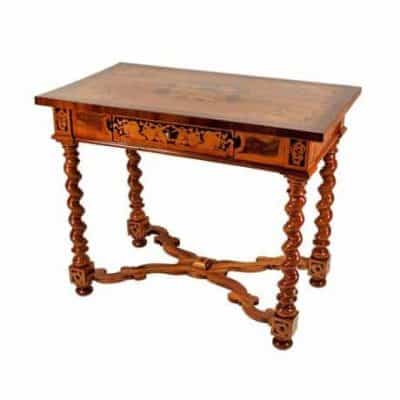
Combine antique accents by placing this stunning German Baroque Table in a different room or right across from the cabinet. The swirling legs and gorgeous marquetry make this another example of wood-forward Baroque design. Where opulence is found in the materials themselves, not in gold or marble décor, for instance, the bridge to modern interiors is certainly easier to make.
French Baroque
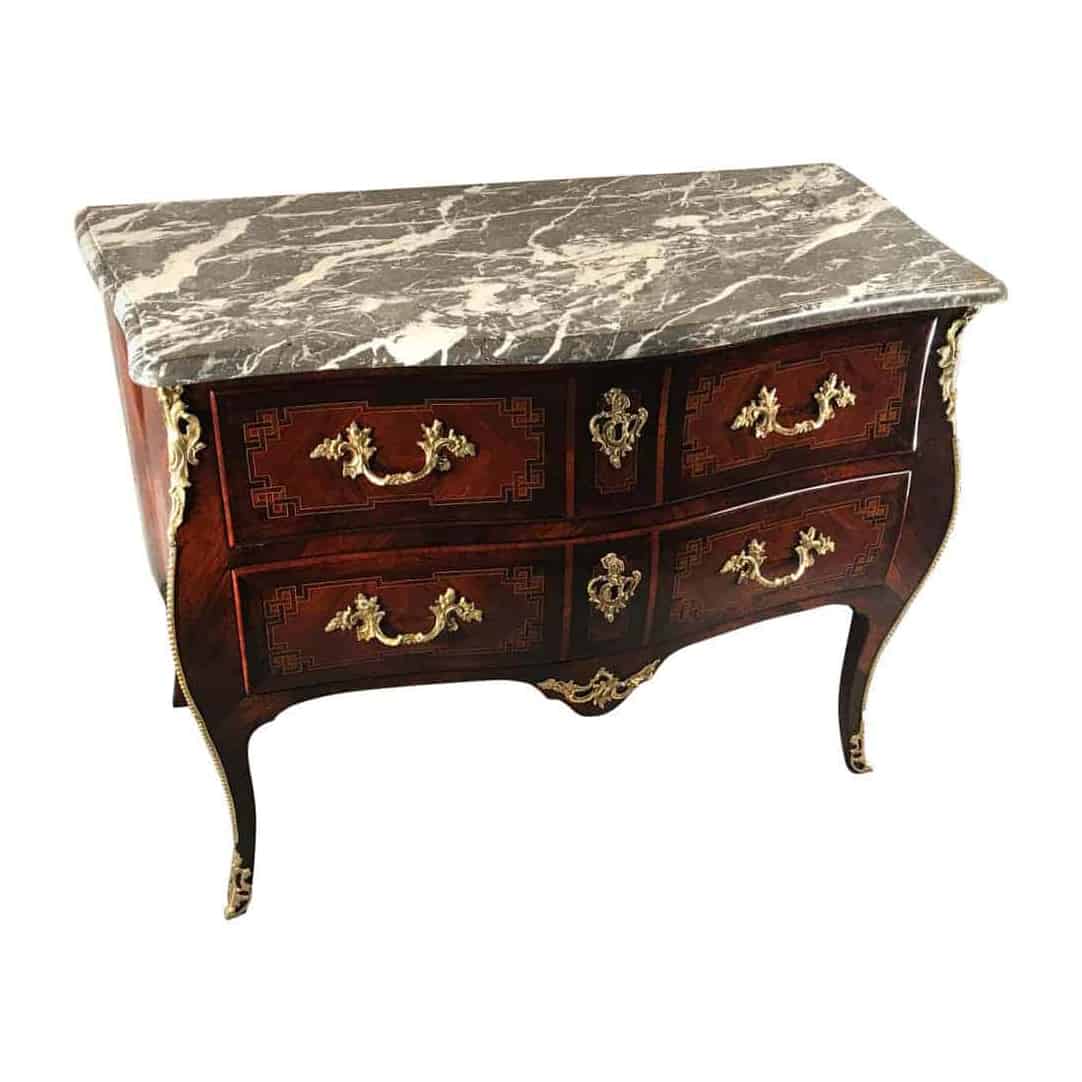
That does not mean there isn’t a place for Louis XV Rococo Baroque furniture. This Classic Louis XV Dresser is simply gorgeous.
Classic gold ormolu fittings line the handles and the locks. A stunning original marble plate lines the top. This piece can elegantly invite guests into your home in an entry hall, for instance. Or let it keep your treasures safe in a special corner of your living room.
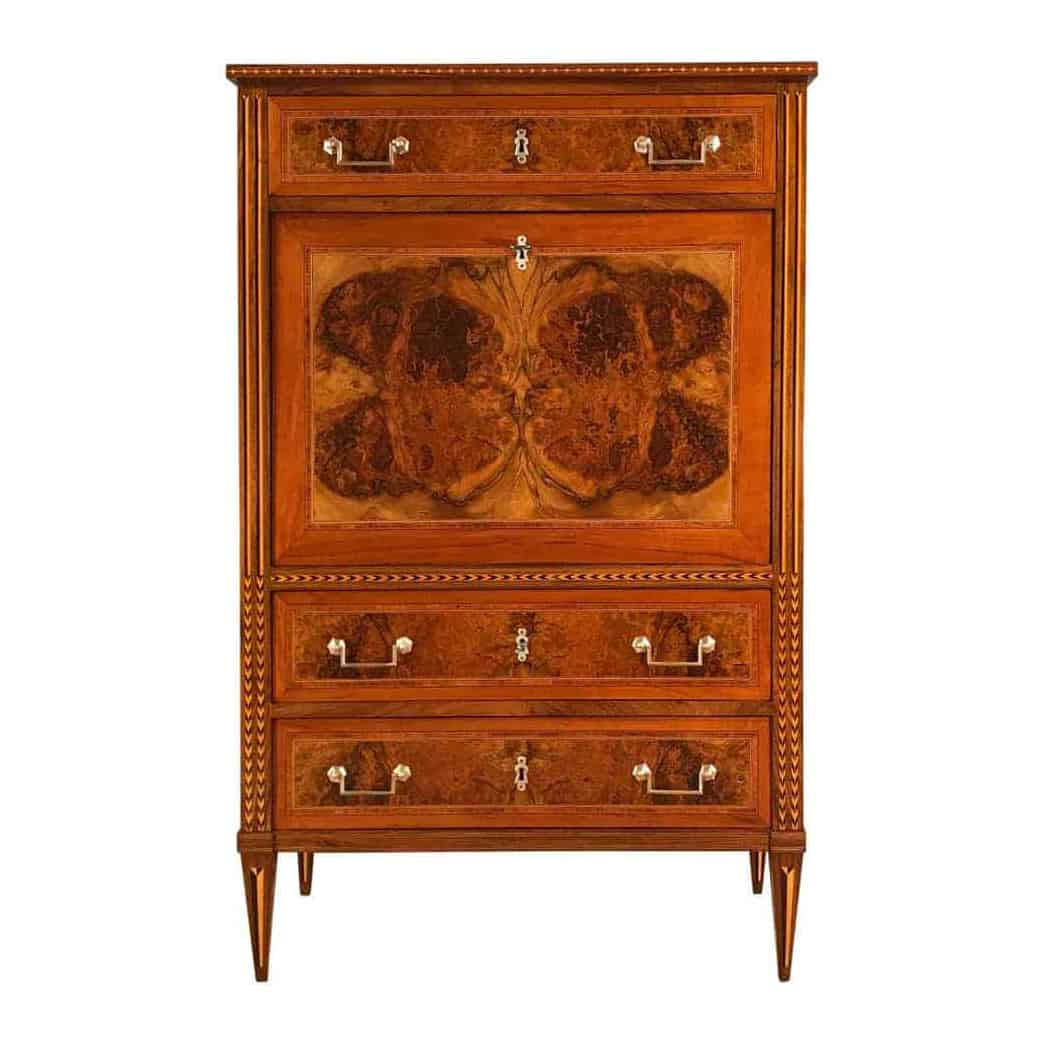
This Late Baroque French Secretary, on the other hand, already sees some influences from Louis XVI style Neoclassicism. The organic swirls of Baroque have given way to right angles, lending the piece a more formal, imposing character.
That does not make it any less decorative, however. Something about the creative veneer on this secretary desk lends itself to modern combination. Find surprising reflections of the geometric repetitions in the legs in Bauhaus or Mid Century Modern styles.
Baroque Design: Far from Outdated
It’s easy to dismiss the Baroque period as too vainglorious for modern sensibilities. But take a closer look, and you can take stock of the real decorative possibilities in a piece of Baroque furniture. You’ll come to appreciate the details in a deeper sense.
As true works of heart, Baroque pieces belong in your home. Showcase their qualities, renew their functional use, and draw heightened aesthetics out of your modern interiors.

